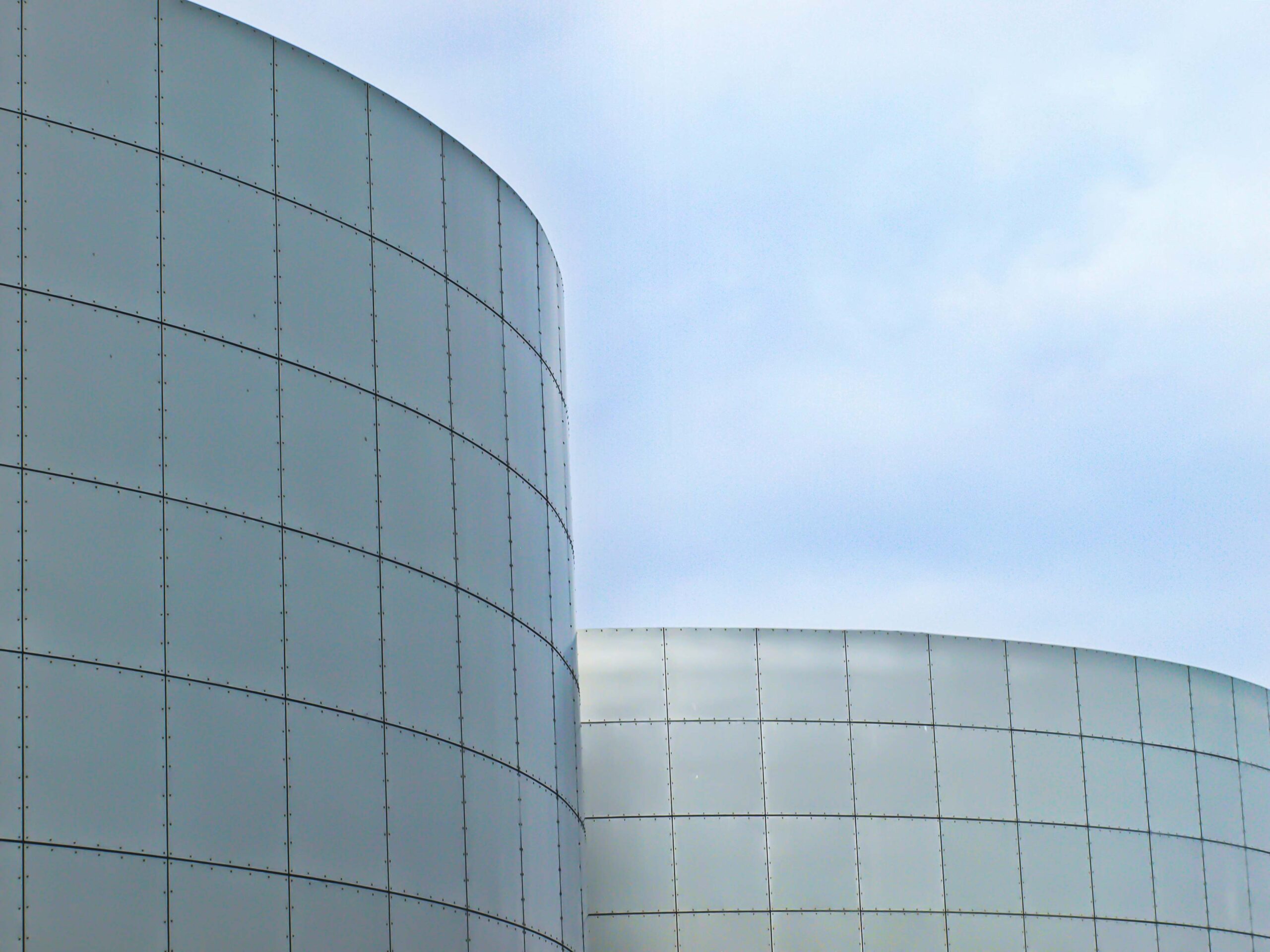Examining Breakthroughs in Metal 3D Printing Tech
The global sector for 3D printed alloy is predicted to escalate to $7.9 billion by 2028. This significant expansion is driven by significant developments in metal 3D printing technology. These innovations are transforming how we manufacture complex pieces and structures. Sectors such as space and medical field are at the forefront, utilizing 3D printing metal to produce detailed, personalized parts with unparalleled precision.
This article examines the advanced technologies fueling this transformation. It uncovers how 3D printable metal is profoundly modifying manufacturing techniques. By exploring these breakthroughs, we gain insight into the prospects of fabrication and the enormous potential of this technology.
Understanding Alloy 3D Printing
Alloy 3D printing is transforming the production industry by enabling the creation of complex alloy components with unparalleled exactness and flexibility. This technology allows for the layer-by-layer building of complex pieces, delivering significant advantages over classical processes.
What is Metal 3D Printing?
Alloy 3D printing, or alloy 3D printing, utilizes various methods to manufacture metal pieces. A 3D printing machine alloy printing device functions by depositing material layer by layer, straight from CAD models. This method facilitates the fabrication of intricate forms and customized designs.
The History of Metal 3D Printing
The evolution of metal 3D printing began in the late 1900s with early designs of simple designs. Over time, advancements have increased its potentials, transitioning from simple models to advanced parts. Nowadays, alloy 3D printing is used in aviation, automotive, and medicine sectors, because of ongoing advancements.
Key Advantages of Alloy 3D Printing
Employing a metal 3D printing machine provides numerous advantages over conventional manufacturing methods. These include:
- Design Freedom: The capacity to manufacture complex forms and elaborate shapes that classical processes cannot accomplish.
- Minimized Waste: Alloy 3D printing employs substance effectively, cutting down on scrap during the fabrication method.
- Customization: Effortlessly manufacture tailored pieces, enabling quick model development and bespoke solutions across various uses.
- Velocity: Quicker production times from idea to finished item, optimizing the production workflow.
These gains make metal 3D printing a compelling option for firms aiming to advance and improve their fabrication abilities.
The Progression of Alloy 3D Printing Methods
The development of metal 3D printing has been nothing short of extraordinary, progressing from rudimentary starts to the sophisticated methods we now observe. This path has focused on optimizing the sophistication of *metal 3D printed parts*, refining the application of *3D printing metal powder*, and extending the availability of *metal 3D printing provider* companies.
Early Innovations
At its inception, alloy 3D printing was marked by experimental approaches and a narrow range of substances. The first major advancements were SLM and EBM. These technologies paved the way for more stable manufacturing of alloy parts. Pioneering users utilized these methods to create complicated shapes that classical production techniques couldn’t handle.
Modern Technological Trends
Currently, the innovations in alloy 3D printing are transforming manufacturing. The focus is on speeding up printing methods, improving material properties, and cutting expenditures. The production of high-performance *3D printing metal powder* has enabled to produce strong and precise *metal 3D printed pieces*. Additionally, the expansion of *metal 3D printing service* providers has turned advanced fabrication attainable to firms of all scales.
Powder Bed Fusion Methods in Metal 3D Printing
Powder-Based Fusion methods have transformed metal 3D printing, delivering high exactness and exceptional material integrity. This technique employs a electron beam to fuse fine alloy powders, including the cutting-edge alloy powder bed fusion technique. It excels in creating complex forms that traditional production processes cannot attain.
Two main Powder-Based Fusion methods are prominent: Selective Laser Melting and Laser-Based Sintering. Each offers unique benefits and is vital in industries like aerospace, car, and healthcare manufacturing.
- Selective Laser Melting: Employing a intense laser, it completely fuses the material, producing pieces with superior physical characteristics.
- Direct Metal Laser Sintering: This technique uses a laser to precisely melt material particles, perfect for creating pieces with complicated internal structures and superior precision.
Laser-Based Sintering is preferred for complex layouts and rapid prototyping, ensuring efficiency without sacrificing precision. Despite Powder-Based Fusion technologies have substantial prices and extended fabrication speeds, their precision and material efficiency are propelling their use across fields.
Here is a detailed analysis:
| Element | Laser Sintering | Laser-Based Sintering |
|---|---|---|
| Laser Type | Intense beam | Fiber laser |
| Material Use | Excellent | Medium to High |
| Usage Flexibility | Extremely versatile | Extremely versatile |
| Primary Sectors | Aerospace, Car, Healthcare | Aerospace, Vehicle, Healthcare |
| Common Materials | Aluminum, Titanium, Stainless Steel | Aluminum, Titanium, Steel |
Both alloy powder bed fusion technologies are evolving, guaranteeing enhanced productivity and material properties. As technology advances, the potential of Powder-Based Fusion in metal 3D printing is expected to grow, driving progress across diverse sectors.
Implementations of Selective Laser Melting
Laser Sintering has changed the metal 3D printing sector, offering unequaled precision and flexibility. It facilitates the fabrication of complicated structures with effortlessness. This part explores how Laser Sintering is utilized across various sectors, highlighting its substantial influence.
Selective Laser Melting in Space Sector
In space, Laser Sintering is essential for creating intricate engine parts such as turbine blades and fuel injectors. It allows for significant weight reduction while maintaining strength. This produces enhanced and reduced weight aerospace vehicles.
By improving fuel economy and lowering carbon output, Laser Sintering aligns with sustainability goals in the space industry.
Uses in Medicine of Selective Laser Melting
The healthcare field substantially benefits from Selective Laser Melting, especially in producing personalized medical devices and prosthetics. Healthcare providers can now create devices customized to particular individuals, ensuring a improved comfort and performance. This results in better patient outcomes.
Custom implants, such as those for bone and dental needs, are made to fit the individual structure of each individual. This demonstrates the versatility of metal 3D printing in enhancing medicine.
| Sector | Uses | Advantages |
|---|---|---|
| Aerospace | Engine pieces, rotor blades, fuel injectors | Weight reduction, increased fuel economy, enhanced operation |
| Healthcare | Personalized prosthetics, prosthetics | Individualized medical treatment, enhanced comfort and functionality, shorter healing period |
Benefits of Electron Beam Fusion
Electron Beam Melting is a leading-edge technique in alloy 3D printing. It employs a concentrated electron beam to melt alloy particles in a vacuum. This method offers multiple major advantages.
Minimizing Oxidation:
One significant advantage of Electron Beam Melting is its vacuum environment, which substantially decreases material oxidation. This is crucial for substances like titanium and its alloys. These are crucial in space and medical applications due to their reactivity.
Enhanced Substance Traits:
Working in a vacuum environment not only preserves the substance clean but also boosts its material traits. Electron Beam Melting-produced parts often display better tensile strength and durability. These properties are crucial for implementations under high stress.
Detailed Design Capabilities:
Electron Beam Melting is proficient in manufacturing complex layouts and elaborate shapes. The exactness of the electron ray allows intricate and tailored components. This is more than what classical fabrication can attain.
| Element | Gain |
|---|---|
| Oxidation Reduction | Decreased oxidation because of vacuum operation |
| Substance Purity | Augmented resulting from vacuum environment |
| Physical Characteristics | Enhanced tensile strength and durability |
| Design Adaptability | Ability to produce detailed and tailored parts |
EBM’s application of electron beams in a vacuum environment produces superior alloy parts. These components have minimal oxidation and improved physical characteristics. This renders EBM essential in industries demanding exactness and durability, such as aviation and healthcare device production.
Trailblazing DMLS
Laser-Based Sintering has revolutionized the metal 3D printing sector. It employs a powerful light source to sinter alloy particles incrementally, creating complicated pieces without traditional templates. This method is exceptional for its exactness and productivity.
Materials Needed for DMLS
For Laser-Based Sintering, materials must fulfill particular requirements for optimal functionality. Primary materials comprise aluminum, Ti, alloy steel, and cobalt-chrome mixtures. These alloys demand uniform particle size, enhanced thermal properties, and extreme heat resistance to withstand the powerful laser energy.
- Uniform Powder: The metallic particles must be consistently shaped and designed for precise sintering.
- Thermal Properties: Substances must efficiently take in and conduct temperature to melt and stabilize appropriately.
- High Melting Points: Guaranteeing stability during the binding process avoids defects.
Comparison between DMLS and Traditional Manufacturing
When comparing Direct Metal Laser Sintering to conventional manufacturing, Laser-Based Sintering offers clear benefits. It can create complex geometries, minimize material waste, and significantly reduce production cycles. For detailed patterns and samples, Laser-Based Sintering offers unmatched adaptability and precision.
| Element | Laser-Based Sintering | Traditional Manufacturing |
|---|---|---|
| Complicated Forms | Superior | Limited |
| Material Loss | Low | High |
| Manufacturing Duration | Quick | Extended |
| Personalization | Highly Flexible | Constrained |
By embracing Laser-Based Sintering, industries can unlock substantial productivity and improvements in product development and fabrication. This tech is setting the stage for a new epoch of progress.
Outlook of DED
Looking ahead, DED is likely to change production. Its potential for rapid material placement and the potential to enhance or restore components marks a notable shift. This tech is likely to profoundly impact sectors like heavy industry and power.
DED allows the repair of pieces that have deteriorated, thus extending the lifespan of crucial devices. This is especially beneficial in sectors relying on large machinery, where substitute pieces can be both lengthy and expensive.
The adaptability of Energy-Based Deposition in managing various materials turns it into a ideal choice for tailored production results. It provides exactness and efficiency to the process, opening up novel paths in product creation and engineering.
Here’s a in-depth examination of the advantages DED delivers in diverse industries:
| Field | Benefits of DED |
|---|---|
| Large-Scale Manufacturing | Rapid material placement, repair and refurbishment capabilities |
| Power | Maintenance, lengthened part life, and cost reduction |
| Aerospace | Tailored production, lightweight components, precision |
| Healthcare | Superior exactness, biocompatible materials, quick model development |
In closing, the advancement in Direct Energy Deposition indicates a promising prospects. It guarantees to enhance production effectiveness and improve resource utilization, maintaining Direct Energy Deposition at the leading edge of fabrication tech.
Alloy 3D Printing Advancements in Vehicle Manufacturing
Alloy 3D printing is transforming the car sector, bringing novel advancements to vehicle creation and production methods. This tech enables the manufacturing of personalized pieces, challenging conventional production methods.
Impact on Vehicle Design
Car creators now employ metal 3D printing to craft detailed and lightweight structures. This versatility facilitates the manufacturing of distinct components that enhance car performance and appearance. Significantly, complex geometries that were once impractical or prohibitively expensive are now achievable.
Boosts in Fabrication Productivity
3D printing innovation substantially boosts manufacturing productivity in the vehicle sector. It reduces the need for several fabrication phases, simplifying manufacturing sequences and cutting down on waste and lead times. Moreover, swift prototype creation is enabled, allowing faster revisions and quicker market entry for new designs.
The advantages of 3D printing in vehicle pieces are clear: boosted accuracy and reduced material consumption. These advantages produce substantial cost savings and production effectiveness across the field.
Binding Technology: A Significant Advancement in Metal Printing
Jetting Process indicates a pivotal leap in metal 3D additive manufacturing, offering various advantages for industrial use. This technique, which deposits a 3D printing metal adhesive layer by layer, substantially cuts production time over conventional methods. Its cost-effectiveness is remarkable, appealing to manufacturers seeking reduce costs without compromising quality.
Yet, it’s essential to recognize some limitations. Early parts may show lower compactness and strength. To alleviate this, secondary methods like sintering can be used. These actions improve material properties, aligning them with those attainable through other alloy 3D printing techniques.
Regardless of these compromises, Binding Technology’s gains, especially in terms of quickness and expense, are substantial. By incorporating a 3D manufacturing alloy adhesive into their techniques, businesses can unlock considerable gains. This places them at the cutting edge of manufacturing progress.
Expansion with Big Metal Additive Manufacturing Machines
New big alloy 3D printers are revolutionizing the manufacturing of complicated, massive pieces across industries. These printing devices offer immense promise but also present distinct hurdles. Overcoming these obstacles is vital to fully utilize their potentials.
Hurdles in Big Printing
One significant hurdle with large-scale alloy 3D printing machines is ensuring accuracy over big areas. As prints increase in size, ensuring consistent precision and stability becomes more complex. Extended production durations for large structures also introduce factors that challenge the fabrication process.
- Accuracy and Exactness: Guaranteeing exactness over larger areas is complicated, often requiring advanced adjustment and monitoring techniques.
- Print Speed: More extensive structures take longer to produce, which increases the risk of mistakes and the demand for improved supervision techniques.
- Material Processing: Managing the large volumes of metal powder or filament needed for these printed items introduces handling issues in substance storage and handling.
Industries Benefiting from Large Format Printers
Several fields will significantly profit from large-scale alloy 3D printing machines, particularly those demanding large, intricate parts. The ability to 3D fabricate big components on-demand delivers significant operational and financial gains.
| Sector | Gains | Implementations |
|---|---|---|
| Building | Shorter production durations, Personalization | Construction parts, Building frameworks |
| Shipbuilding | In-situ production, Financial effectiveness | Ship bodies, Drive elements |
| Energy | Long-lasting component fabrication, Decreased operational breaks | Pipe components, Exploration tools |
These examples highlight the extensive possibilities uses of big alloy 3D printing devices across various industries. As technology advances, it will be exciting to witness how 3D producing large items will additionally transform these industries.
Breakthroughs in Substances in Metal 3D Additive Manufacturing
The alloy 3D additive manufacturing industry is developing quickly, propelled by material innovations. New alloy particles and mixtures are driving this progression, significantly improving the technology’s capabilities and uses. International companies are investing funds into innovation to uncover innovative alloys for diverse commercial applications.
A notable advancement in 3D fabrication materials development is the introduction of unique alloy combinations. These substances boast enhanced robustness, temperature resistance, and corrosion resistance. Such breakthroughs are vital for industries like aviation, automotive, and medicine, where durability and efficiency are paramount. Furthermore, personalizing these alloys for particular needs delivers unequaled adaptability and effectiveness in manufacturing.
To showcase the range and gains of breakthroughs in substances in alloy 3D additive manufacturing, review the table below, which describes key innovations and their uses:
| Breakthrough in Substances | Key Properties | Commercial Uses |
|---|---|---|
| Titanium Alloys | Reduced weight, enhanced robustness, anti-corrosion properties | Aerospace, healthcare devices |
| Nickel-Based Mixtures | Thermal stability, robustness | Power generation, car, aviation |
| Aluminium-Based Compounds | Lightweight, high corrosion resistance | Vehicle, aviation |
| Stainless Steel | Robustness, toughness, corrosion resistance | Medical devices, food processing, automotive |
These examples highlight the significant influences of advancements in materials on 3D printing metal development. As these advancements advance, they are set to change conventional production, allowing intricate shapes and tailored material properties.
Personalized Alloy Components: Revolutionizing Fabrication
The ability to manufacture custom metal pieces through 3D fabrication is transforming manufacturing. This innovation offers unmatched 3D printing customization abilities. It facilitates industries to manufacture complicated layouts and personalized pieces effortlessly.
Tailoring Potentials
3D fabrication tailoring offers a notable gain by enabling parts customized to particular demands. Unlike conventional processes, 3D printing facilitates quick model development and adjustments. This adaptability is vital for fields needing precision and uniqueness in their pieces.
- Flexibility: 3D fabrication supports complicated geometries and intricate details that are hard to accomplish with classical methods.
- Swift Prototype Creation: Enables rapid shift from concept to sample, leading to faster revisions and a reduced product launch duration.
- Expense-Efficient Manufacturing: Cuts scrap and substance expenses by manufacturing only what is needed.
Industries Utilizing Custom Metal Parts
Multiple fields are utilizing personalized alloy components through 3D additive manufacturing personalization to boost their products and processes:
- Medicine: Custom alloy components are employed to create individualized prosthetics and prosthetics, improving fit and functionality.
- Automotive: Producers utilize 3D additive manufacturing to create lightweight, robust components that enhance vehicle performance and fuel efficiency.
- Consumer Products: Companies can manufacture custom items customized to particular desires, offering a one-of-a-kind selling point to clients.
The incorporation of custom alloy components and 3D fabrication tailoring is leading several industries into a novel era of fabrication innovation and effectiveness.
Financial Effects of Metal 3D Fabrication Service Offerings
Alloy 3D additive manufacturing services are revolutionizing manufacturing with their versatility and expense reduction. They greatly cut decrease funds and production durations, common in traditional fabrication. This allows for the quick and cost-effective production of complicated metal parts, hastening development periods.
One major benefit of metal 3D additive manufacturing is its minimized waste. Traditional methods often lead to notable waste. In contrast, 3D printing layers material layer by layer, minimizing scrap. This not only reduces production costs but also has a beneficial ecological effect.
Expense reductions are another benefit, because of the potential to manufacture parts on demand. This approach removes the need for large inventories, releasing funds for other ventures. It’s particularly advantageous for fields requiring custom or small-batch parts, like aerospace and medicine industries.
The financial influence of alloy 3D printing also encompasses employment. As need for these services grows, so does the demand for trained employees. These roles involve managing 3D printers, processing finishing, and quality control. This increase supports the employment sector and promotes monetary progress.
These advantages are obvious when comparing conventional manufacturing to metal 3D additive manufacturing:
| Element | Classical Production | Metal 3D Printing |
|---|---|---|
| Initial Investment | High | Minimal |
| Lead Time | Lengthy | Quick |
| Material Waste | Significant | Minimal |
| Customization | Constrained | High |
The financial influence of alloy 3D additive manufacturing is also observed in its business superiority. Companies using these services can rapidly introduce goods to consumers, adapting quickly to market needs and fashions. This adaptability is essential in the current fast-paced business world.
The rise of metal 3D printing services is reshaping economic models, facilitating more effective, expense-efficient, and innovative production processes. As this tech progresses, its financial influence will set to expand, further transforming industrial practices and economic trends.
Eco-Friendly Approaches in Metal Fabrication
The shift towards eco-friendly approaches is crucial in the current fast-paced production environment. Metal additive manufacturing leads this transformation, offering solutions that greatly reduce material loss and energy use. It enables a more productive resource utilization, from design to final product phase.
One significant benefit of metal fabrication is its material efficiency. Classical approaches often lead to significant waste, removing unneeded matter to form the end result. Sustainable 3D printing, however, builds objects incrementally, employing only what’s demanded. This method conserves substances and renders the fabrication technique more eco-friendly, with minimized ecological footprint.
Energy efficiency is crucial for fabricators looking to adopt eco-friendly practices. Alloy 3D printing techniques are generally more energy-efficient than traditional techniques. The accuracy of eco-friendly fabrication minimizes the need for multiple manufacturing stages, thus lowering power consumption. Furthermore, local production with alloy additive devices can minimize the carbon footprint from shipping and transport, improving green practices.
To sum up, alloy 3D printing is initiating a green manufacturing era. By embracing sustainable 3D printing, fields can progress while preserving the earth. As this technology evolves, it promises even more efficiency and a minimized ecological impact. This emphasizes the necessity for these approaches in modern production.



